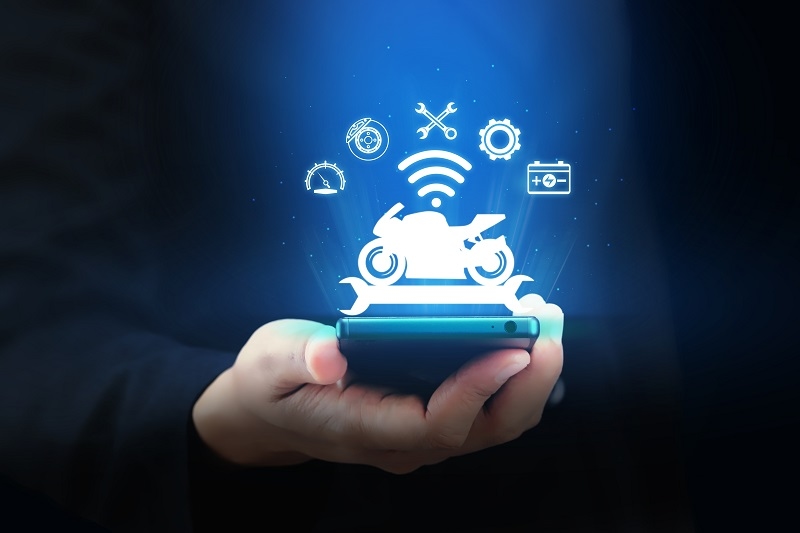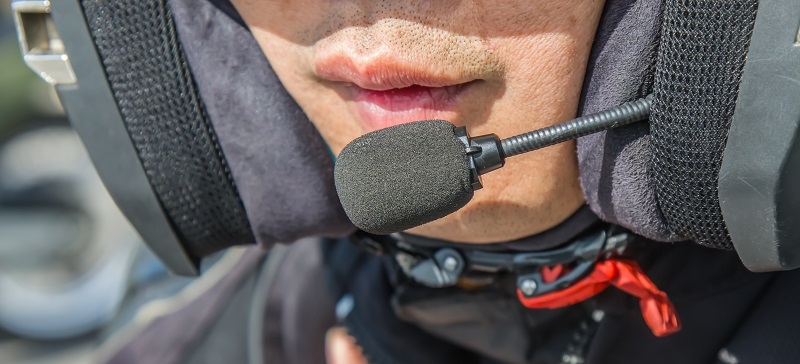
Once upon a time, riding was a solo thing. You, the engine, and miles of road ahead. Silence — apart from wind noise and exhaust hum. And sure, that still has its charm. But let’s be honest: sometimes you want to talk, plan, or just laugh mid-ride without yelling at traffic lights.
Enter the world of motorcycle communication systems — the little miracle gadgets that make riding safer, smoother, and a lot more social. Whether you’re chatting with your group on a mountain route or getting GPS directions whispered right into your helmet, these systems change how you experience the ride.
So, if you’ve ever thought, “Do I really need one?”, stick around. Because once you try it, you won’t go back.
Riding is freedom, but that freedom can be isolating. You can’t pull over every five minutes to check directions or wave down a friend to warn them about gravel ahead. That’s where intercoms and helmet systems step in.
They let riders coordinate in real time, keep convoys together, and even make long rides safer. Imagine cruising through fog or heavy rain and still being able to hear “Sharp turn ahead!” from your buddy up front. It’s not just convenience — it’s safety in stereo.
Plus, they keep you connected without losing focus. Music, phone calls, or turn-by-turn navigation — all hands-free, all while keeping your eyes on the road.
Let’s break it down. These systems are compact wireless devices, usually mounted on your helmet. Most work via Bluetooth, connecting your phone, GPS, or other riders’ headsets.
Modern units have come a long way from the early static-filled versions. Today’s setups deliver crisp audio, wind-noise cancellation, long battery life, and smart pairing features. Some even use mesh networks that don’t rely on Bluetooth range limitations.
You can link up to 15 or more riders, depending on the model — perfect for those weekend group runs where someone always gets lost at the third stoplight.
The real challenge now isn’t whether they work — it’s which one to buy.
Almost every rider starts with a Bluetooth helmet intercom. It’s the simplest way to turn your regular lid into a connected one.
Bluetooth models pair directly with your phone or another headset, letting you talk, play music, or hear navigation prompts. Most have a range of around half a mile, but that’s enough for two-up or close-group riding.
They’ve also become incredibly intuitive. Voice commands, one-touch buttons, and automatic reconnection mean you don’t have to fiddle mid-ride.
Pro tip: when installing, position the speakers right over your ears — even a half-inch off can make the audio feel distant.
If you’ve ever shopped for these gadgets, you know the debate: Sena vs Cardo comparison. It’s the motorcycling world’s version of Apple vs Android — everyone’s got an opinion.
Sena is known for clean design and reliability. Their systems like the Sena 50S offer strong Bluetooth performance, crisp audio, and a solid app experience. They’re user-friendly and work seamlessly across devices.
Cardo, on the other hand, leans into innovation. Their mesh communication technology (used in the Packtalk Edge and Neo) allows large groups to stay connected even if someone drops out of range — the network just reroutes automatically. Plus, Cardo’s JBL speakers sound amazing.
So which is better? Depends on your needs. Sena’s great for smaller groups or solo riders wanting rock-solid connectivity. Cardo shines for group tours, better sound, and flexibility.
Honestly, you can’t go wrong with either. The real difference is in the details — battery life, waterproofing, and personal preference.
Setting up your motorcycle headset setup is easier than it looks — but it does take patience the first time.
Start by removing your helmet’s cheek pads (most modern helmets have removable liners). Mount the speakers in the ear recesses using Velcro or adhesive pads. The boom or wired mic goes near your mouth — experiment with placement to avoid muffled sound.
Next, clip or stick the control unit to the helmet’s side. Connect the cables neatly, reinstall your pads, and power it on. Pair your phone first, then test the intercom.
Once everything’s working, take a short ride and adjust volume. You’ll be amazed how much wind noise changes audio levels at speed.
And yes, waterproofing matters. Even “weather-resistant” devices should be tested in real conditions before a long trip.
Group rides are amazing — until someone misses a turn or gets stuck at a light. A solid intercom setup fixes that instantly.
With proper group ride communication, you can coordinate lane changes, fuel stops, or warn others about road hazards. It also keeps new riders calmer, especially in big convoys.
Mesh systems like Cardo’s Dynamic Mesh or Sena’s Mesh 2.0 make this seamless. Unlike traditional Bluetooth that connects in a line, mesh creates a web — riders can join or leave without breaking the chain.
You can even split channels: one for navigation and another for chatting. Imagine riding through twisty mountain roads while someone calls out the next scenic stop. That’s the kind of teamwork that turns a ride into a story.

Today’s motorcycle communication systems are more than intercoms. They’re multimedia centers tucked inside your helmet.
You can stream music straight from your phone, answer calls with a voice command, or let Google Maps guide you through traffic. Some riders even pair Spotify or Apple Music for those long highway stretches.
And no, it’s not distracting — not if used right. The trick is keeping volume low and letting the system fade music automatically when someone speaks or navigation prompts chime in.
For audiophiles, wireless helmet speakers have become surprisingly good. Brands like JBL (partnered with Cardo) and Harman deliver rich bass and crisp highs — even with a helmet on and wind at 70 mph.
All this tech is fantastic, but never forget the basics. Safety always trumps chatter.
Keep conversations short when traffic’s heavy, and resist the urge to multitask in tricky terrain. Always set your playlist and GPS before you roll out.
That said, intercoms can actually make you safer. Clear communication reduces confusion, especially when riding in poor visibility or new environments. Being able to say “car merging left” can save a friend’s day.
If you’re riding two-up, communication becomes even more valuable. You can coordinate braking, warn about bumps, or just say, “You good back there?” instead of guessing.
Most modern systems give 10–15 hours of talk time, which is plenty for day rides. Keep a small power bank or USB cable handy for charging on the go — many helmets now support quick charge ports.
As for range, expect 0.5 to 1 mile for standard Bluetooth intercoms and up to 5 miles for mesh networks. But remember, real-world terrain — trees, traffic, or mountains — can cut that down.
If you’re doing cross-country trips, plan rest stops where you can recharge both body and battery.
This year has brought subtle but important upgrades. Noise cancellation is smarter, pairing takes seconds, and waterproofing is finally dependable.
Some premium systems now sync with bike dashboards via Bluetooth, displaying caller ID or GPS cues directly on your TFT screen. Others are experimenting with voice assistants like Alexa or Google to make commands completely hands-free.
The direction’s clear: fewer buttons, more brains.
Before you drop a few hundred bucks, think about what kind of rider you are.
And don’t forget helmet compatibility. Some brands (like Shoei and Schuberth) even make models with built-in Sena systems, saving you installation hassle.
If in doubt, try a demo or borrow a friend’s setup on a ride. Nothing beats hands-on experience before investing.
It’s funny — technology was supposed to make life noisier. Yet, when used right, it makes riding more human.
Talking mid-ride doesn’t take away from freedom; it adds connection. You can joke about that near miss, call out a photo stop, or share a quiet “wow” when the road opens up to a stunning view.
That’s the heart of group ride communication — not constant chatter, but shared moments.
Riding used to mean solitude. Now it can mean connection — with your crew, your passenger, or even your playlist.
This isn’t about filling silence; it’s about making the ride smoother, safer, and richer. The best motorcycle communication systems do exactly that — they blend seamlessly into your ride until they feel like second nature.
Whether you’re syncing up a quick Bluetooth helmet intercom for daily rides or exploring the tech war in the Sena vs Cardo comparison, the point is simple: stay connected, stay aware, and stay in love with the road.
Because a great conversation at 60 mph? That’s freedom — upgraded.
This content was created by AI